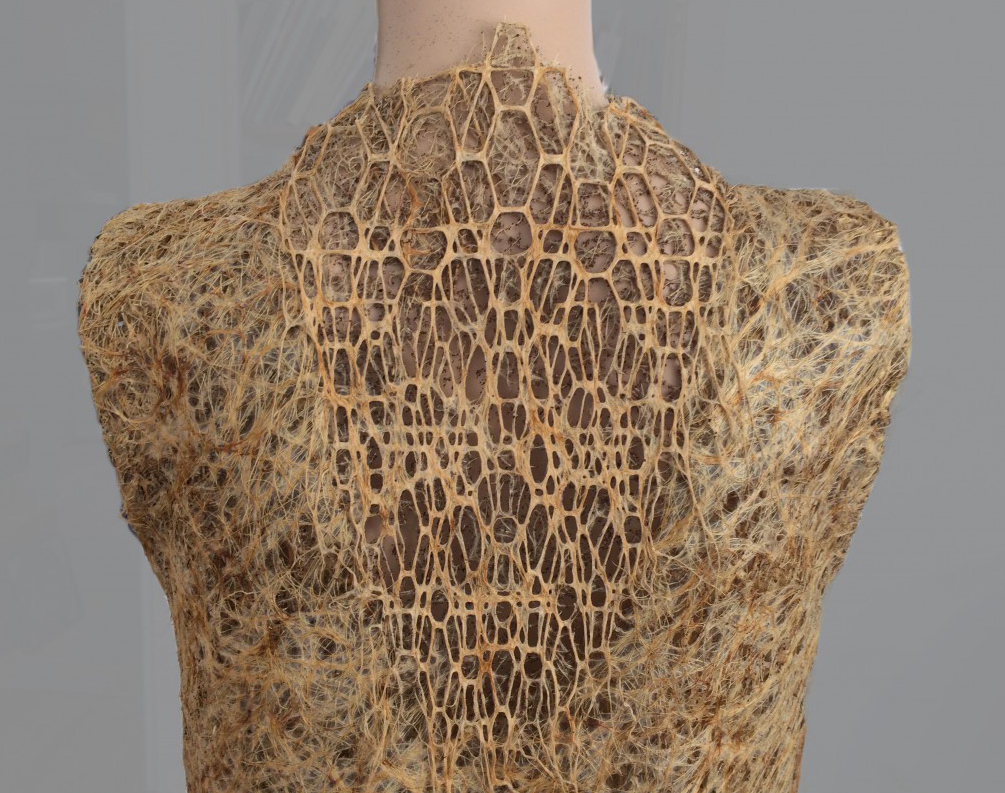
Memory Full? Reimagining the relations between design and history 2021.
Design History Society (DHS) Annual Conference | 2-4 September 2021
A suggested ‘postconservation’ model could extend the legacy and appreciation of fashion artefacts by moving from a representational conservation approach towards one that embraces documenting and preserving the performative, wearable, and renewable concepts. If a fashion item is designed to degrade, what are the archival implications in conserving, documenting processes and ‘performance’ of the applied characteristics of such artefacts?
I am textile conservator (and former fashion designer) with a specialism in contemporary fashion conservation. The above perspective and question stems from my interest in developing ways to diversify the conservation, therefore, accessibility and understanding of dress archives. The DHS21 call for papers caught my attention whilst writing up my doctoral thesis on ‘Designer Intent’ as a ‘postconservation’ methodology in the collecting, curating and exhibiting of fashion artefacts made with ‘postmodern materials’. ‘Designer Intent’ refers to the experience the designer intends to create for the wearer, the cultural context/paradigm and the clothing/accessory is designed for. I propose a different approach of ‘postconservation’ that contributes to a new Material Conservation Theory (MCT) to extend the legacy and appreciation of ‘postmodern materials’ beyond their physical state by moving from a representational conservation approach towards one that embraces performative and renewable concepts. And ‘postmodern materials’ is an emerging term from my research which refers the creation of new materials by progressive production methods developed from the late 20th into the 21st centuries.
My co-authors and I liked the idea of the theme ‘Memory full? as a metaphor in relooking at the relevance, renewability and sustainability of museum dress archives. As a conservator I consider dress archives as often being overloaded because of the traditional commitment to conserving the long-term material stability of contemporary fashion history. My research acknowledges ‘Designer Intent’ as an aspect to consider when conservating contemporary fashion artefacts in museum archives, including that of the intentionally ephemeral. And it is this area of my work that is used to respond to the theme of the conference when thinking about fashion history and the contemporary value systems that connect it to nature and the eco-system.
Our paper Pre-empting loss through ‘fashion memory’: a ‘postconservation’ perspective explores the notion of degradation within a fashion historical context. It considers biodegradable and eco-based fashion artefacts as examples of sustainable design strategies in textile manufacturing. These types of artefacts challenge the current status quo of dress archival protocols because they often support long-term physical survival, therefore, fixing ideas about the aesthetic experiences of users (the viewers). Utilising the Material Engagement Theory (Malafouris 2013), the ‘in-between’ space of the mind and the maker and the postphenomenological emergence and impact of technologies on humans and the environment (Ihde 1995) introduces temporal dynamic elements that ‘postmodern materials’ often show during the transient process of degradation.
Comparable and contrasting object studies show these aspects of transience and degradation that consider the wider stakeholderships . A Wild Rubber dress designed by Vivienne Westwood and Andreas Kronthaler c.2013, ‘ECCO’-Leather dress by Iris van Herpen, c.2010 and the Rootbound #2 dress by Diana scherer c.2017 (Figures 1-2), highlight notions of pre-empting loss as a collection care approach, illustrating the potential benefits in archiving of the temporal aspects of contemporary fashion. Outcomes indicate creative practices of fashion designers using ‘postmodern materials’ cannot be represented as being stable nor neutral.

Discussing these ideas contributed to the exploration of different paradigms in dress heritage, design practice and ‘fashion memory’ as shared reference points during the DHS21 session Collective Antidotes to Amnesia. Presenters included Nikumbu Mutambo and Ellen Sampson, Northumbria University, UK, who discussed utilising dress archives as resource to inform multiple practice-based approaches in (re)engaging with dress artefacts and designing methods in dismantling traditional approaches to dress heritage through the understanding of Zambian fashion practice. And Julie Pastor, Cooper Hewitt, Smithsonian Design Museum, USA, who presented a collective memory model as part of fashion interpretive practice when exhibiting the work of late black American designer, Willi Smith. These diverse perspectives on harvesting memories of design as cultural heritage promoted renewed approaches to dress heritage by debating aspects of design memory that recognises different formats of fashion engagement.

As contribution to these new ideas on design memory my paper attempted to reconceptualise aspects of degradation in postmodern (and postgrowth) materials, which may occur in contemporary fashion artefacts, and how and why these aspects could support developing documentation procedures to record ‘Designer Intent’ for ongoing archival access. Conserving (un)intended conditions of fashion artefacts as material agency are examined by my co-authors and I to assess the potential benefits and rewards for the uses and users of fashion museums. Particularly, users who are not familiar with postmodern/postfashion heritage.
Recognising the role of biodegradation in postmodern fashion heritage emphasises the need to change museum archive paradigms to accommodate this history. A ‘postconservation’ approach is recommended to support these ideas and discussions and to encourage temporary archival protocols that connect to societal, environmental fashion heritage, one that enables wider appreciation of postmodern and postgrowth fashion history.
Leanne Tonkin is a PhD level researcher, lecturer and conservator in contemporary textile and fashion conservation, currently based on Nottingham Trent University, UK.
Categories
Contribute
Want to contribute to the blog and newsletter? Contact us
Newsletter
Keep informed of all Society events and activities, subscribe to our newsletter.



